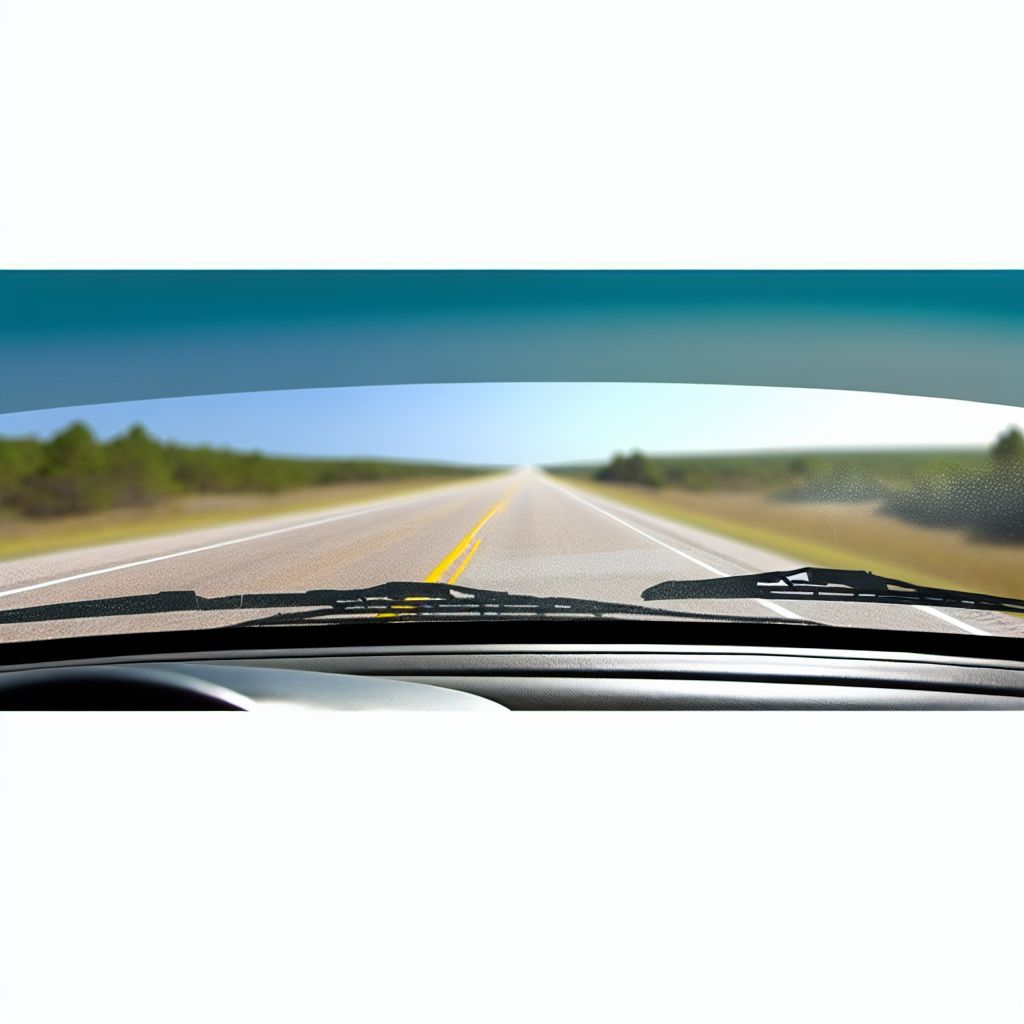Deutsch: Windschutzscheibe / Español: Parabrisas / Português: Para-brisa / Français: Pare-brise / Italiano: Parabrezza
In the travel context, a windshield is a critical component of a vehicle, designed to protect passengers from wind, rain, debris, and insects while providing clear visibility for the driver. It's an essential safety feature in cars, motorcycles, buses, trains, and some aircraft. In travel, the integrity and clarity of a windshield are paramount for safe navigation and comfort during journeys, whether they're short commutes or long road trips.
Description

The windshield serves multiple purposes in travel safety and comfort. It's made from laminated glass, which is designed to resist impacts and prevent shattering, protecting passengers in the event of an accident. Modern windshields may also incorporate technologies such as UV filtration, heating elements to prevent icing, and coatings to repel Water and reduce glare.
In addition to its primary safety functions, the windshield also plays a role in the aerodynamic design of vehicles, helping to reduce noise and fuel consumption. For motorcycles and some sports cars, the windshield's design is optimized for aerodynamics and rider/driver protection while maintaining visibility.
Application Areas
- Automotive Travel: In cars and buses, providing visibility and protection to drivers and passengers.
- Motorcycle Riding: Where windshields are smaller but crucial for rider protection against the elements.
- Recreational Vehicles (RVs): Large windshields offer wide viewing angles, enhancing the driving experience in scenic areas.
- Rail Travel: Trains have windshields that protect operators and ensure clear visibility for safe travel.
- Aviation: In smaller aircraft, windshields are crucial for pilot visibility and protection against high-speed airflow and objects.
Well-Known Examples
- Heated Windshields: Used in colder regions to prevent ice and snow buildup, ensuring clear visibility.
- HUD (Head-Up Display) Windshields: Incorporate displays that project information like speed and navigation onto the windshield, allowing drivers to keep their eyes on the road.
Treatment and Risks
Maintaining windshield integrity is essential for safety. Chips or cracks can impair visibility and compromise the windshield's structural integrity. It's recommended to repair any damage promptly to prevent further deterioration. Additionally, keeping the windshield clean is crucial for maximizing visibility under varying weather conditions and at different times of the day.
Similar Terms
- Windscreen: Another term for the windshield, more commonly used in British English.
- Visor: In helmets, serving a similar protective and visibility-enhancing function as windshields but on a much smaller scale.
Weblinks
- top500.de: 'Windshield' in the glossary of the top500.de
Summary
In the travel context, the windshield is a vital component of vehicle safety, providing protection and clear visibility for travelers. Its importance extends beyond simple convenience, contributing to the aerodynamic performance of vehicles, reducing fuel consumption, and enhancing passenger comfort. With advancements in technology, windshields continue to evolve, incorporating features that further improve safety, comfort, and the overall travel experience.
--
Related Articles to the term 'Windshield' | |
| 'Traffic' | ■■■■■■■■■■ |
| In the travel context, \"traffic\" refers to the movement of vehicles and pedestrians on roads, streets, . . . Read More | |
| 'Two-door' | ■■■■■■■■■■ |
| Two-door: In the travel context, \"two-door\" typically refers to a type of vehicle configuration, most . . . Read More | |
| 'Eurostar' | ■■■■■■ |
| Eurostar in the travel context refers to a high-speed train service that connects several major cities . . . Read More | |
| 'Road Trip' | ■■■■■ |
| Road Trip is the only defining factor of a road Trip is the road. . . . Read More | |
| 'Cruiseliner' | ■■■■ |
| Cruiseliner: In the travel context, a cruiseliner refers to a large passenger ship designed for leisure . . . Read More | |
| 'Compartment' | ■■■ |
| Compartment: A \"compartment\" typically refers to a separate and enclosed space within a larger vehicle . . . Read More | |
| 'Railcar' | ■■■ |
| Railcar is the railway vehicle made up of a single powered coach. . . . Read More | |
| 'Centre' | ■■ |
| Centre: In the context of travel, transport, and hotels, the term \"centre\" (also spelled in American . . . Read More | |
| 'Reserve' | ■■ |
| Reserve: In the travel context, \'reserve\' typically refers to the act of reserving or booking a service, . . . Read More | |
| 'Transport' | ■■ |
| \'Transport\' refers to the various modes of transportation used to move people or goods from one place . . . Read More | |
